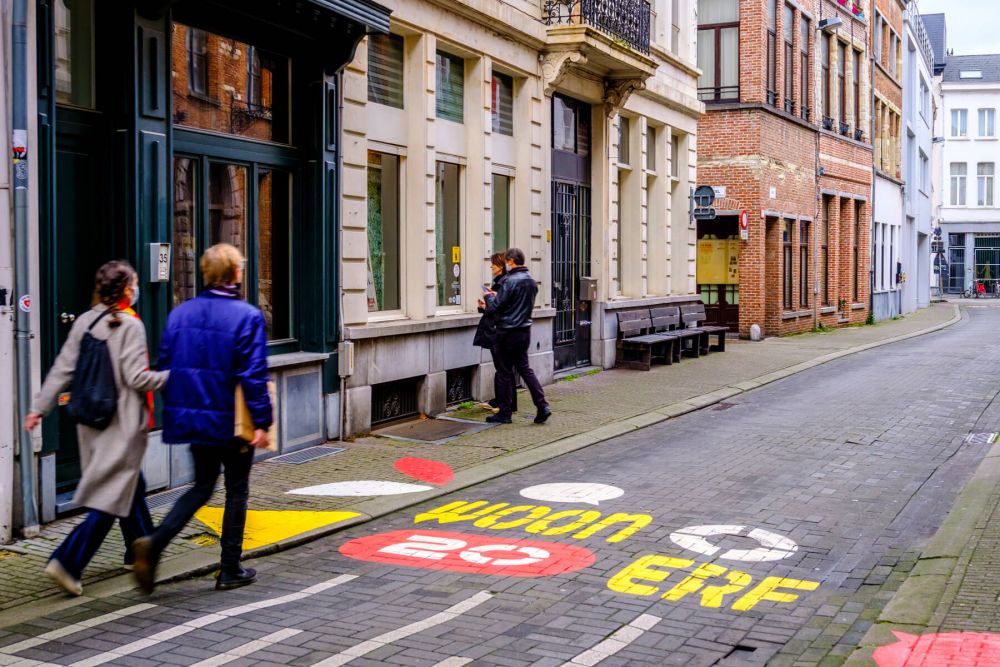Antwerp - the Walking City
6 Jul 2021
Walking the streets of Antwerp has recently become quite a pleasure for many of its citizens, thanks to the ‘Living Streets’ initiative. In Belgium’s second largest city and Europe’s second largest port, where major flows of freight transport, commuters, and visitors typically compete for road space, the aim is to create streets for the people where cars are limited and children can play safely.
Since September 2020, Antwerp has created 26 ‘Living Streets’ in its historic city centre, and is looking to expand. In these temporary zones – recognisable by the ‘light’ interventions of colourful road markings and signs – pedestrians are permitted to use the full width of the road, playing is allowed, drivers must not endanger or hinder pedestrians (in particular children), the speed limit is 20km/h, and parking is prohibited (unless indicated otherwise). To automatically enforce the speed limit, the city has introduced infrastructure such as large plant pots and bicycle stands, where cars need to give way. The city is monitoring this temporary test set-up and, where considered a success, will redesign the areas into permanent Living Streets, with long-term infrastructure. Although Antwerp had already been planning this initiative, the impact of the COVID-19 pandemic on the lives of city dwellers without outdoor space, gave the city an incentive to accelerate its implementation, and encourage its citizens to enjoy their streets and walk more.
The look and feel of each Living Street is a result of close collaboration between Antwerp’s various stakeholders. Through the SUMP-PLUS City Integrator instrument, the city was able to engage with and integrate the activities of many departments including Communications, Urban Design and Public Space, Urban Infrastructure, Public Health, Tourism and Mobility. Together they came up with designs, which take into account the style and conservation of historic street environments. For example, they designed the Living Street in a high-end shopping street in white and grey to match the image of the streetscape.
Antwerp has big plans for its walking citizens: by 2025, it will have turned 16% of the 73 kilometres of roads in its historic city centre into Living Streets and 28% into completely car-free areas. As explained by Antwerp’s Deputy Mayor responsible for mobility, Koen Kennis, “This [‘Living Streets’ initiative] will significantly improve the living conditions and quality of life for residents and make the city more attractive to visitors. This could also give a new impulse to a number of catering and retail businesses in the city.”
All news

